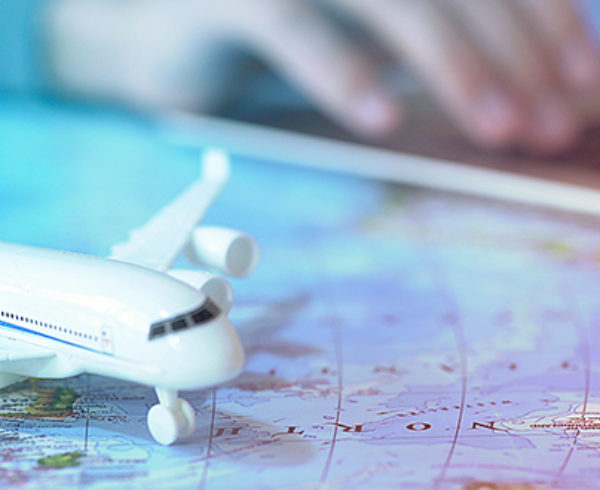Business Travelers have options when getting from Point A to Point B. But what is the safest mode of transportation in the age of COVID-19?
Though the COVID-19 pandemic lingers, business continues. And, in many cases, conducting business requires travel. It’s certainly possible to travel in a responsible manner during the coronavirus outbreak, but what’s the absolute safest mode of transportation during a pandemic?
The Centers for Disease Control and Prevention (CDC) has published detailed information on traveling safely while COVID-19 remains a threat. Here’s a ranking of methods of travel from safest to least, followed by general guidelines that should be followed no matter how you travel. Keep in mind that our understanding of the safest mode of transportation may evolve as experts learn more about COVID-19 and how it spreads.

1. Car
According to the CDC, the safest mode of transportation right now is by car. Riding in a car allows you to remain socially distanced for most of your trip. All you have to do is worry about wearing a mask when getting food or pumping gas, and then sanitizing your hands once you’re back in the vehicle.
Of course, not all trips can be taken by car. Riding in a car will work best for in-state and regional work trips. If you’re used to another mode of transportation, you may even find switching to a car for a short period of time refreshing — an opportunity to enjoy the open road.

2. Air
The CDC says that airplanes circulate and filter air in a way that makes it hard for viruses and germs to spread. That makes air travel the second safest mode of transportation during the pandemic. When and if possible, try to sit next to an empty seat when traveling by air. Also, avoid touching surfaces as much possible, and sanitize often. (For more, check out our resource hub, which includes videos of Airline and Hotel safety round-table events on Restoring Business Traveler Confidence.)
For contact tracing purposes, the CDC also recommends updating your contact information with the airline you use. That way, if a passenger on your flight tests positive for COVID-19, the airline will be able to get in touch and let you know.
3. Train
Train travel is close behind air travel in the rankings. While train travel is somewhat similar to flying, the nature of trains makes it harder to socially distance and avoid touching surfaces. Also, it takes longer for a train to cover the same distance as a plane, so you are stuck in close confines for a longer period.
Always wear a mask when traveling by train, and be sure to wash your hands frequently and use hand sanitizer as often as possible.
4. Ship
Few Travelers are using ships for work trips, but it’s important to note that the CDC views traveling on ships as the riskiest form of transportation right now. Indeed, the CDC has extended a previous no-sail order for all cruise ships.
Why are ships so dangerous? The nature of sea travel makes ships cesspools for the spread of viruses like COVID-19.
The CDC’s General Tips for All Travel and Modes of Transportation
No matter how you choose to travel on your next work trip, the CDC has offered up tips that all Travelers should follow. Those tips are:
- Stay Home if You Can: Not all work trips are essential. If you can stay home, you should do so.
- Practice Good Health Etiquette: Wash your hands with soap and water for at least 20 seconds or use hand sanitizer with at least 60% alcohol. Avoid touching your face as much as possible. And cover your face when coughing or sneezing (and then wash or sanitize again afterward).
- Be Polite, Keep Your Distance: The term “social distancing” has become an accepted part of our collective vocabulary. The CDC recommends keeping at least 6 feet between you and others while traveling.
- Mask Up: Always wear a mask when traveling.
- Bring What You Need: Don’t leave home without the essentials: hand sanitizer, sanitizing wipes, masks, etc.
Support for When You Do Travel
JTB Business Travel exists to help companies save on travel spend while supporting Travelers during work trips. Our mission is more important than ever during the COVID-19 pandemic. If and when you have to travel, our team is here to provide support before, during and after your trip. Behind everything we do is a common sense approach to business travel.
Beyond our services as a travel management company, we also offer a range of content and guides that our clients find helpful. For Travel Managers, we recently published a Return to Travel Playbook to share how to safely restart your travel program in the midst of a pandemic. For Travelers, we recently published a Be Travel Ready guide that walks you through what to do before, during and after trips while COVID-19 is still a threat.
Contact us today to learn more about how we can support your company and its Travelers.














Leave a Comment